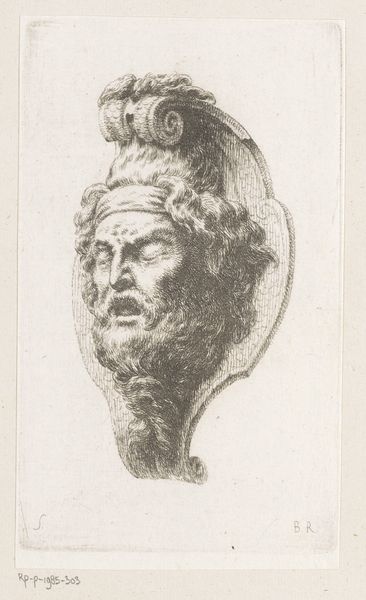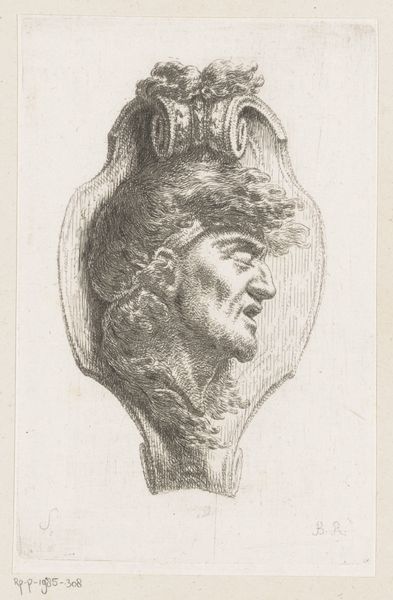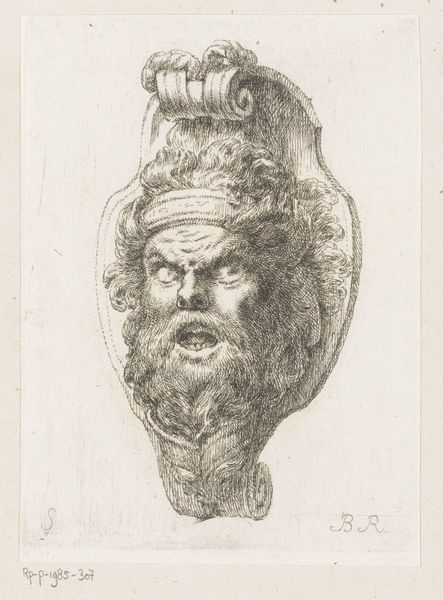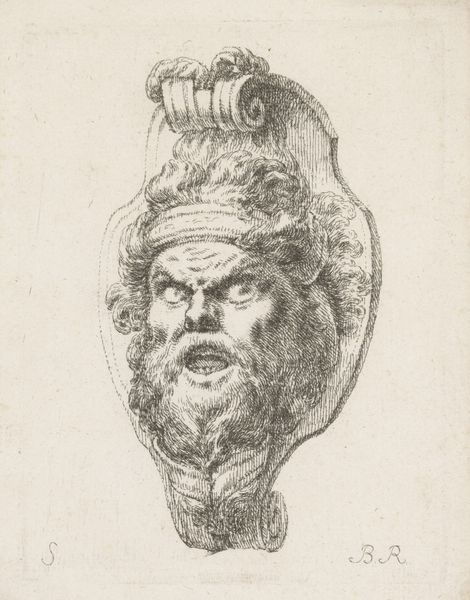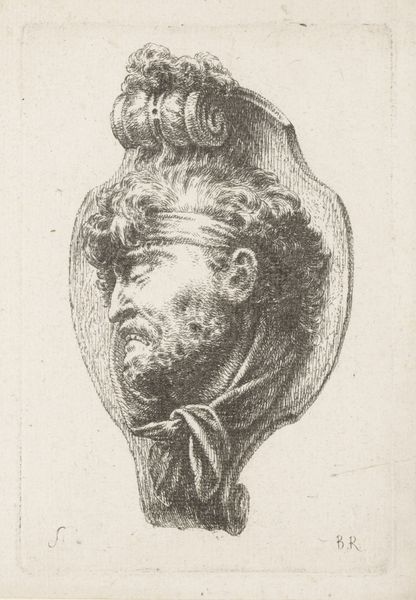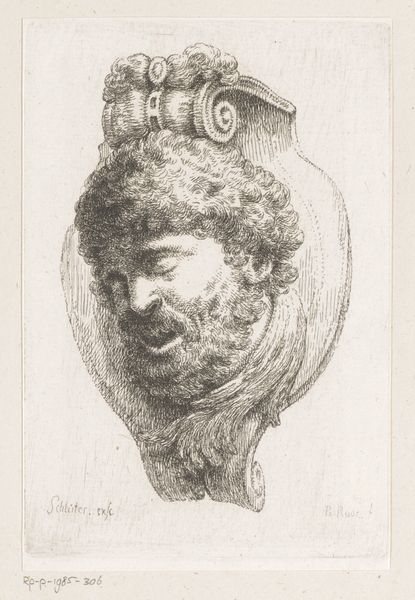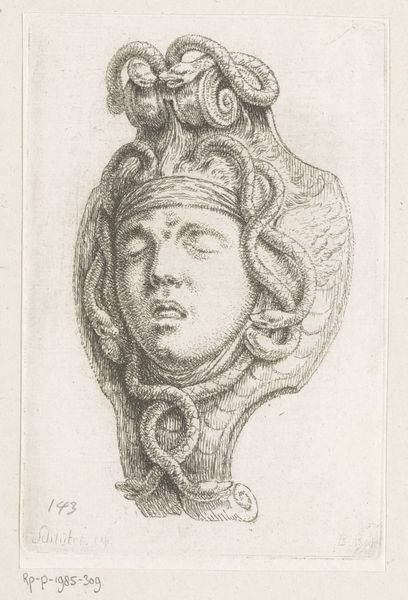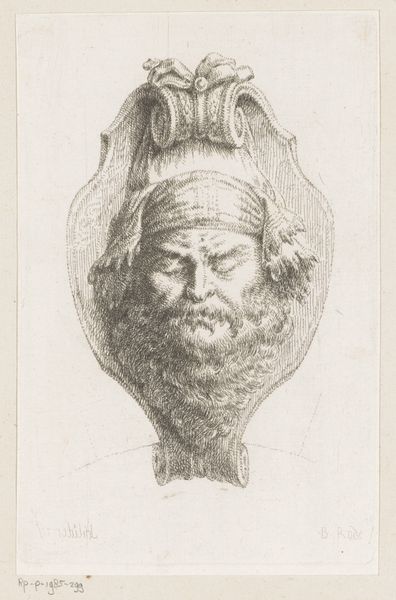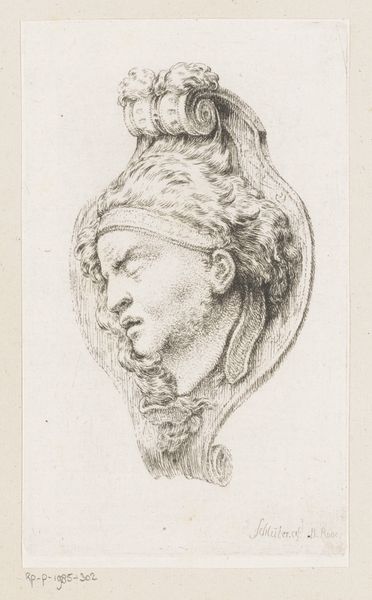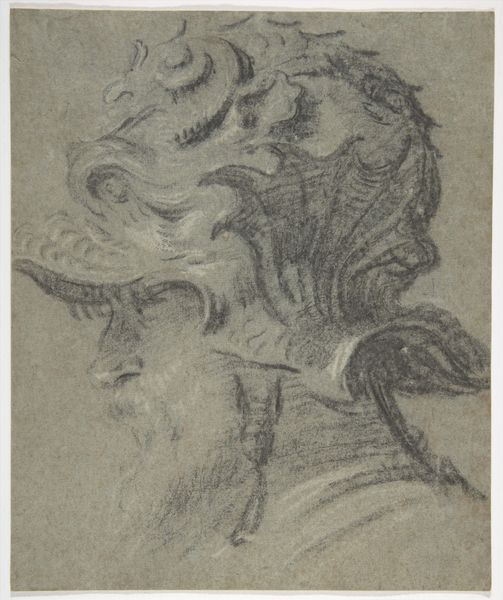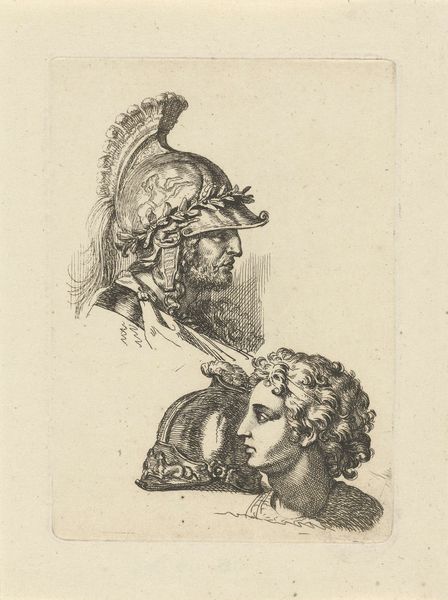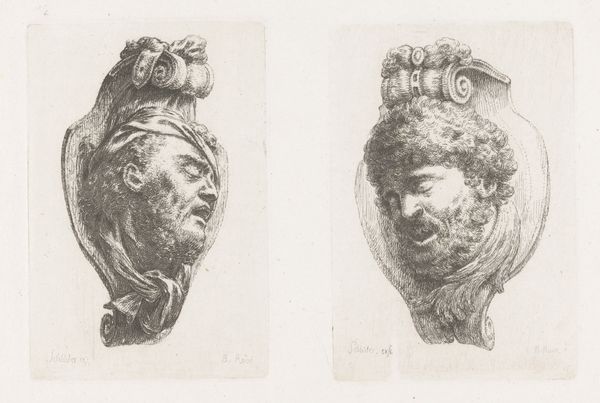
drawing, pen
#
portrait
#
pencil drawn
#
drawing
#
baroque
#
charcoal drawing
#
pencil drawing
#
pen
#
history-painting
Dimensions: height 181 mm, width 105 mm
Copyright: Rijks Museum: Open Domain
Curator: Here we have Christian Bernhard Rode's "Mascaron met mannenkop" from 1759, currently housed at the Rijksmuseum. My first impression is its intriguing air of stoicism. The face is captured with such meticulous detail using pen and charcoal. What are your initial thoughts? Editor: Well, immediately, I’m drawn to the process of making it, particularly the relationship between pen and charcoal, this interesting use of line and smudging and the way the artist utilizes the materiality to create a kind of texture and light. The texture is somewhat rough. What’s the context for these mascarons, I wonder? Curator: The historical context here is really fascinating. Mascarons, these grotesque faces, were architectural elements meant to ward off evil spirits and often represent marginalized figures, particularly those deemed threatening to societal order. So Rode, by crafting this drawing, engages with those loaded themes around fear and othering present in 18th-century Europe. Editor: That's interesting in relation to the physical creation itself. To create something with a pen on paper to act as protection reminds me a bit of an apotropaic object. Do we know the socioeconomic status of the artist? I am interested to know how this artwork circulated around this time and who owned this work. Curator: Rode moved within educated circles. His art, influenced by the enlightenment, served often as moral commentaries and reflections on power. His choice to depict the masculine head perhaps comments on the changing notions of masculinity, class, and intellectual power within the era's social dynamics, when notions around citizenship and the value of labor started changing rapidly. Editor: So, was it meant to subvert or uphold those power structures? The production of the drawing and the status of materials themselves played a vital part in how art history will assess it. Curator: It is complicated. His art often navigates ambiguity. It isn't clear if Rode meant to challenge the system or offer some nuance of thought in these times. By bringing this particular type to paper Rode might have also invited for a critical re-examination of these very common ornaments and those figures from the margins they were to protect from, through art. Editor: The act of translating it to drawing perhaps makes that critical reflection even stronger. It is something meant to adorn grand architecture now put on paper for scrutiny and distribution. I would love to research the artist and his engagement with materials further. Curator: Exactly, considering the subject, medium, and era allows us a peek into past anxieties, and power structures which can spark our reflection now. Editor: And thinking through the process and its historical and artistic lineage lets me reflect on where my analysis fits within the current day.
Comments
No comments
Be the first to comment and join the conversation on the ultimate creative platform.
